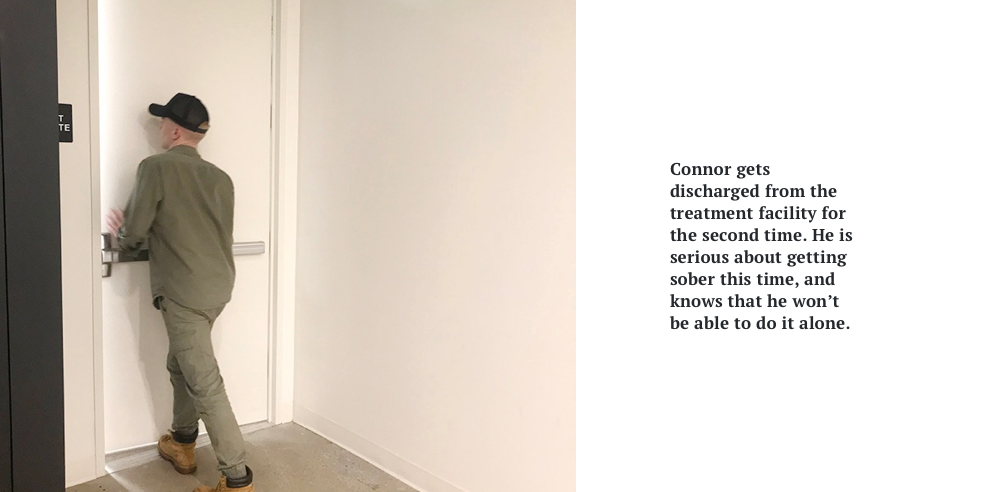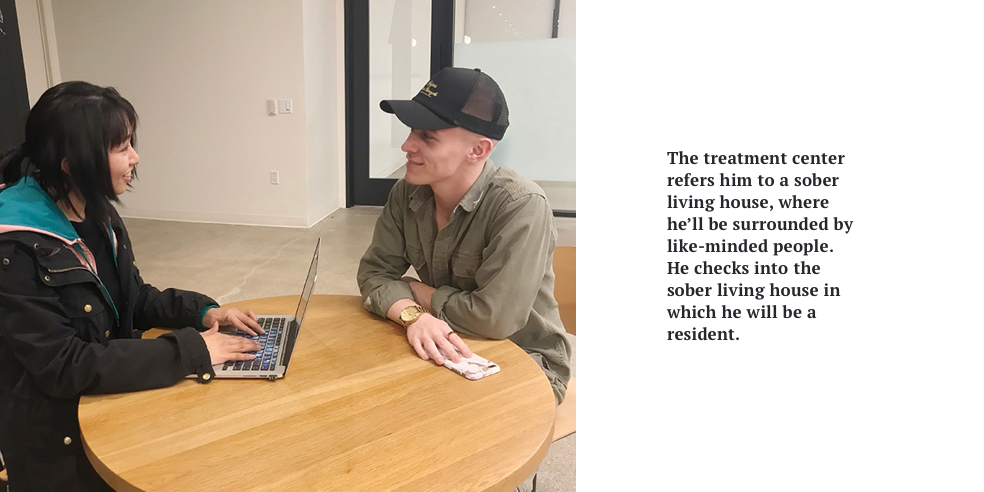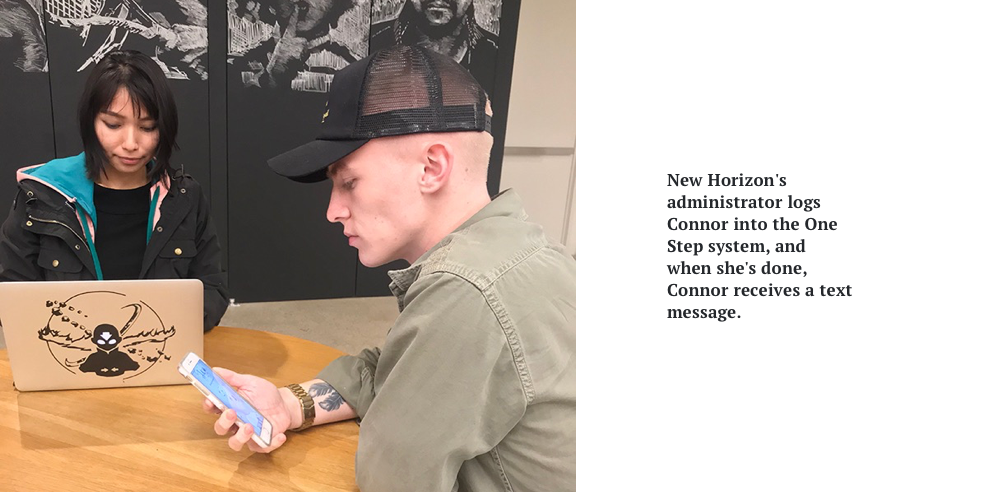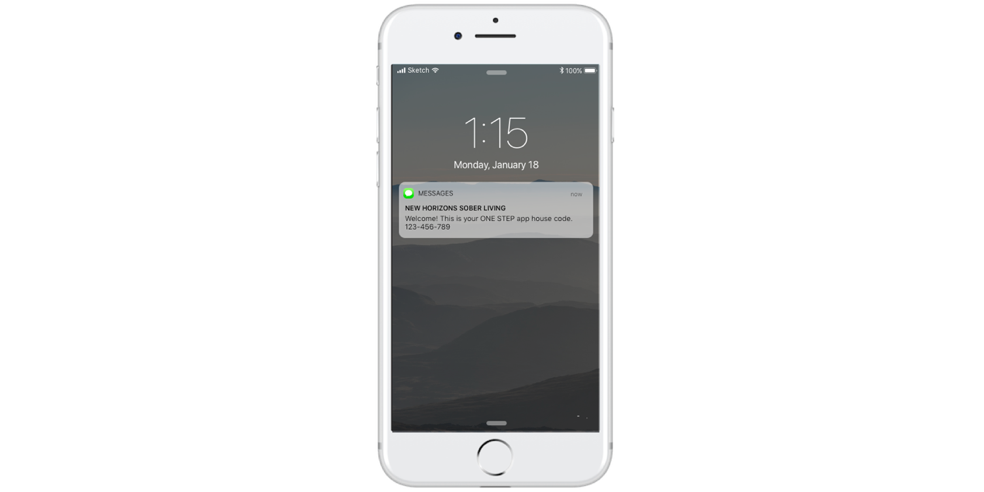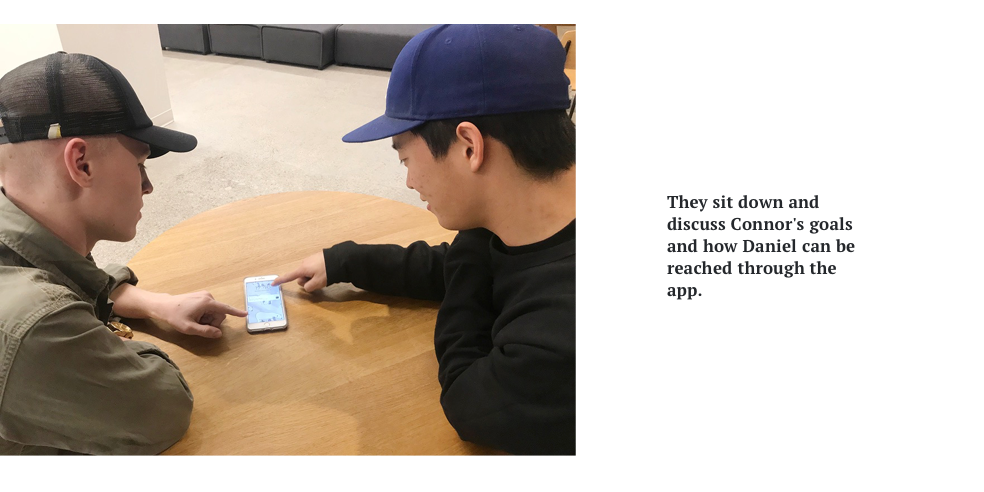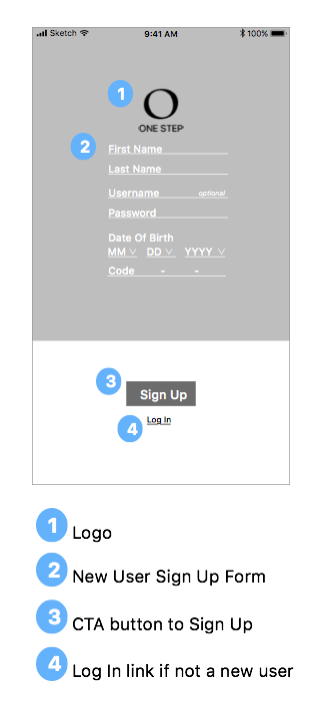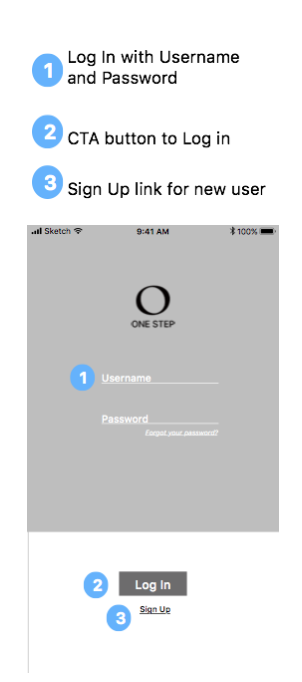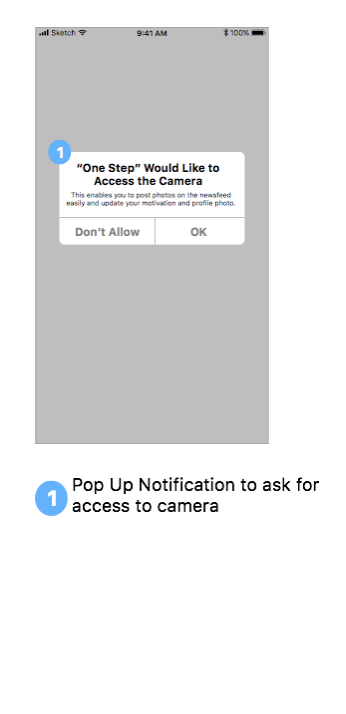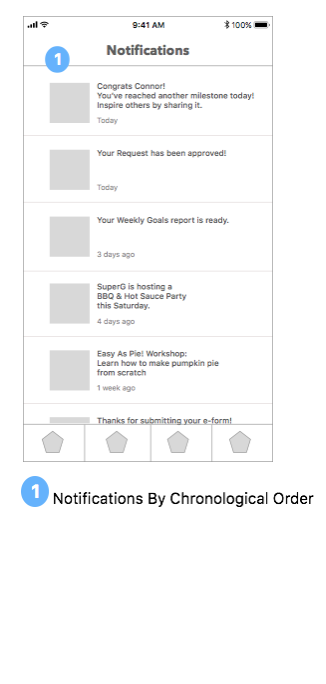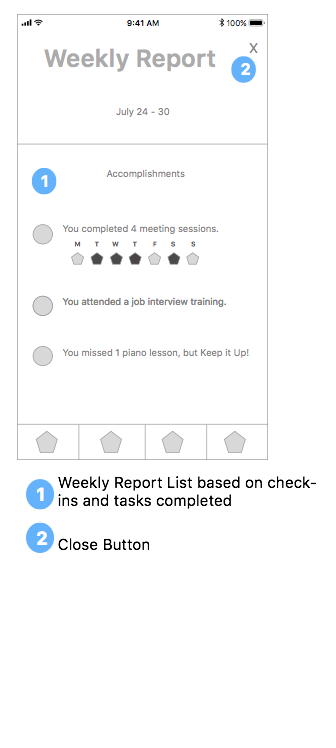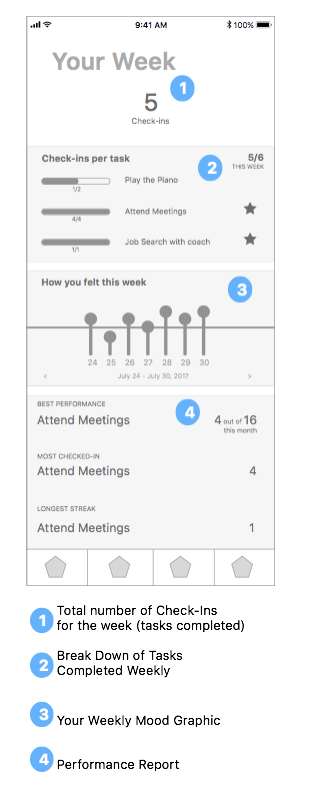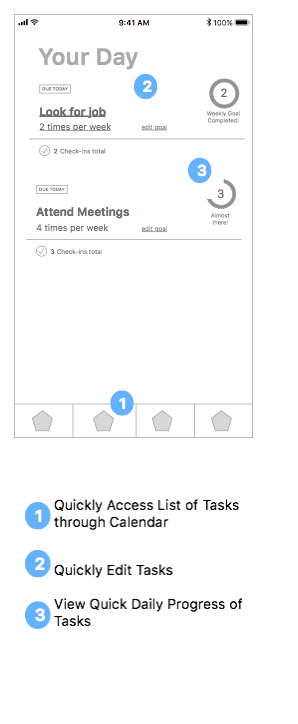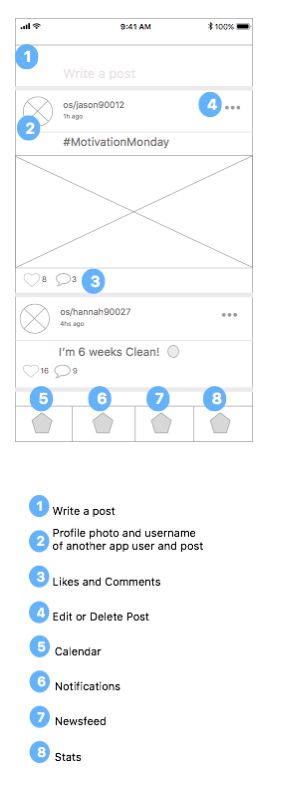Sprint Background
Recovering addicts are those who have completed treatment and have been discharged from treatment or medical facilities, but are continuously battling their addictions. The relapse rate for recovering addicts range from 40-60%. There is an obvious need for intervention, but how do we deliver it while being sensitive to both their and our client’s business needs?
One Step combines peer and professional support to deliver a resource to addicts in recovery. Our goal was to create an app that supports the needs of recovering addicts while providing metrics to sober living houses.
Client
One Step
Team
Sophia Lee - Lead Researcher
Liliam Higa - Project Manager
Rubi Aliaga - Lead Designer
Business Needs
increase in daily engagement
decrease in relapse rate
track and measure behavior
Duration
3 weeks
How can we best help recovering addicts?
Discover
C&C Analysis
The chosen competitors were all addiction support apps, each approaching support in different ways. The top apps were determined by their number of downloads.
A comparison of features across the top 3 apps revealed features that users would most likely expect to see in our product as well. These features were a good start to our roadmap.
A sentiments analysis across the top 5 apps divulged specific complaints and praises users had about each app. Something that R-Tribe, the most heavily downloaded app, offer differently was access to a limited network of users and a gamefied system of leveling up through check-ins and task completion. R-Tribe users were recommended to other users whose personal profiles matched theirs, but it was also possible to search for friends.
Insights
Users want to know that there are others who relate to their struggles
Users are more tempted to relapse when they feel like they are alone
Users want to feel like they are in control of their recovery
Fly-On-THe-Wall Observations
How is peer support - in the form of AA (Alcoholics Anonymous)/NA (Narcotics Anonymous - utilized as a method of maintaining sobriety and why is it so effective? Although the AA meetings we attended were conducted differently with varying demographics, they had in common an inclusive, communal and social environments.
What members took away from AA meetings:
Security in an environment they knew was a safe space, free of judgement
Knowing there was a support system available to them any day of the week
Catharsis in telling their story and being accepted by people who could relate
Insights
We needed to bring in the parts of AA to which people responded positively and try to isolate what made AA so effective.
How do we digitize the social experience and bonding of AA?
How do we make users feel safe and heard?
Rising up to the challenge of synthesizing very sensitive information, we observed these trends in behavior, needs, and pain points.
I need to know that I can be happy without drugs.
Social reinforcement can be a huge support for me.
I need structured guidance.
I need a new passion
I need a way to cope with life and its challenges.
Drugs affected who I was. Who am I without it?
I don't question my addiction. It feels normal to me.
Insights
Our users needed easy access to peer and professional support. They needed a way to keep themselves accountable and track their progress. Positive social reinforcement was a big motivator as well. Our new challenges lay in designing solutions for these points.
Define
Meet Connor Smith
“We all struggle with relationships, finances, pride, ego, ambition, and drugs are our way of dealing with those struggles. I made some terrible choices, but I’m not a terrible person.”
WHO HE IS
Unemployed, previously a lawyer
Lost his job and home due to alcoholism
Headed to a sober living home after discharge from treatment facility
He has already relapsed once
Traits: Paranoid, doesn’t like being told
what to do, restless, determined
WHAT HE NEEDS
Structured guidance
Belonging to a relatable community
Coping mechanisms with the daily stresses and challenges of life
A future to work towards
Customer Journey Map
I tracked Connor’s emotional journey through his treatment, relapse, and recovery. It includes a relapse, at least one of which every addict and AA member reported having.
When can One Step make a difference?
The app is introduced after treatment to aid in the recovery process and prevent relapse. Even if a relapse occurs, One Step will be used to keep the user actively engaged with their recovery. It also provides sober houses a tool to check in with users and keep track of their progress.
Scenario
Ideate
User Flow
Among all the tasks that Connor would be able to complete through the app, we focused on getting him signed up, onboarded, and interacting with the dashboard. Connor's user flow starts with him checking into his sober living house New Horizon, when he first interacts with One Step with a text message. Through the dashboard, Connor is able to complete three tasks:
submit a daily check-in
confirm meeting attendance
interact with the app network.
Information Architecture
Using the MSCoW feature prioritization method, we finalized these as the ones to develop in our MVP (minimal viable product).
Newsfeed, Big Book (12-step guide), Tips, In-app messaging, Progress tracker, Goal set-up and progress, Sober day tracker, Check-in (meetings, usage, mood), Calendar, Emergency counselor access, Notification, Settings, Profile, Daily Challenge
The Big Book, tips, and daily challenge features are populated within the newsfeed, giving Connor an incentive to open and engage with the app daily.
Design Studio
Something that set One Step apart from the competition was recovery coaching and an intimate network. The in-app network consisted only of the residents of Connor’s sober living house, people he would be seeing daily in addition to being a part of their social network. We had to design for a dashboard that would incorporate these while also addressing Connor’s needs and pain points.
Through design studio, we ideated and designed several iterations of dashboards. These were the ideas I had for gamefying the dashboard and the process of checking in to meetings. I drew inspiration from video game interfaces and Pokemon cards.
Design
Sketched Wireframes
These are the initial sketched screens we made for the user flow. It includes a design for a moodboard would be part of the onboarding process. In order to give the app a video-gamey look, Connor updates his moods and usage with a progress bar. The screens we deemed a priority to make are: Calendar, Newsfeed, Dashboard, Profile, and Messages.
Test
With paper prototype in hand, we went forward with usability testing.
I presented a scenario and three tasks to each of the test participants:
Imagine you are a drug addict who has just been discharged from a treatment center. You check into a sober living house. You sit down with the One Step recovery coach, Daniel, who explains One Step, a recovery companion app. The app will be the main mode of communication with the recovery coach, while also providing professional and social support. You explore 3 different functions of the app.
Update daily mood/usage
Check off 1 running task
You are in a crisis, and you need to talk to your recovery coach right away. Call Daniel.
It took the participants, on average, 00:01:25 to complete the tasks. Confusion was reported on the iconography and icon placement of the dashboard, but the feedback was generally positive.
Iterate
Dashboard iterations using the results of the usability testing. The dashboard displays Connor daily goals and indicate completion with a progress bar as a visual indicator of his successes. With addiction, it’s always about taking one day at a time.








